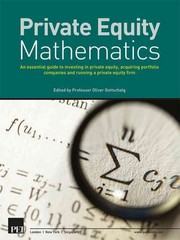






Integrative-Optimal capital structure Medallion Cooling Systems, Inc., has total assets of $10,100,000, EBIT of $1,980,000, and preferred dividends of $195,000 and is taxed at a rate of 40%. In an effort to determine the optimal capital structure, the firm has assembled data on the cost of debt, the number of shares of common stock for various levels of indebtedness, and the overall required return on investment: Cost of debt, rd Required return, rs Capital structure debt ratio 0% 15 30 45 60 0% 7.7 8.7 11.9 14.9 Number of common stock shares 197,000 170,000 139,000 112,000 84,000 12.3% 13.2 13.8 15.8 20.1 a. Calculate earnings per share for each level of indebtedness. b. Use the equation Po = EPS/rs and the earnings per share calculated in part (a) to calculate a price per share for each level of indebtedness. c. Choose the optimal capital structure. Justify your choice. a. Calculate earnings per share for each level of indebtedness. Calculate the EPS below: (Round to the nearest dollar. Round the EPS to the nearest cent.) Debt Ratio 0% EBIT $ 1,980,000 Less: Interest $ EBT EA $ Taxes @40% Net profit Less: Preferred dividends $ $ Profits available to common stockholders #shares outstanding $ $ $ 197,000 EPS Calculate the EPS below: (Round to the nearest dollar. Round the EPS to the nearest cent.) Debt Ratio 15% EBIT $ 1,980,000 Less: Interest EBT Taxes @40% $ Net profit Less: Preferred dividends Profits available to common stockholders # shares outstanding 170,000 EPS $ Calculate the EPS below: (Round to the nearest dollar. Round the EPS to the nearest cent.) Debt Ratio 30% EBIT $ 1,980,000 Less: Interest $ EBT $ $ Taxes @40% $ Net profit Less: Preferred dividends Profits available to common stockholders $ # shares outstanding 139,000 EPS $ Calculate the EPS below: (Round to the nearest dollar. Round the EPS to the nearest cent.) Debt Ratio 45% EBIT $ 1,980,000 Less: Interest $ $ EBT Taxes @40% $ Net profit Less: Preferred dividends $ Profits available to common stockholders # shares outstanding $ 112,000 EPS $ Calculate the EPS below: (Round to the nearest dollar. Round the EPS to the nearest cent.) Debt Ratio 60% EBIT $ 1,980,000 Less: Interest $ EBT Taxes @40% $ $ $ Net profit Less: Preferred dividends $ Profits available to common stockholders # shares outstanding 84,000 $ $ EPS b. The price per share for the 0% level of indebtedness is $ (Round to the nearest cent.) The price per share for the 15% level of indebtedness is $. (Round to the nearest cent.) The price per share for the 30% level of indebtedness is $ (Round to the nearest cent.) The price per share for the 45% level of indebtedness is $ (Round to the nearest cent.) The price per share for the 60% level of indebtedness is $ (Round to the nearest cent.)













